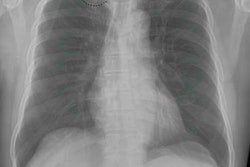Sunday, December 1 | 10:45 a.m.-10:55 a.m. | SSA20-01 | Room E351
Fluoroscopically guided interventional radiology procedures are known to deliver the highest radiation dose among all imaging exams. The question is: How much dose does a patient receive from one or multiple procedures?This retrospective study included more than 25,000 patients (average age, 58.2 ± 17 years) who underwent a total of approximately 46,000 fluoroscopically guided interventional procedures between January 2010 and January 2019. The patients had the procedures for a variety of conditions, including trauma, stroke/brain aneurysm, internal bleeding, organ transplant, and cancerous tumors.
The researchers, led by Xinhua Li, PhD, a medical physicist in the department of radiology at Massachusetts General Hospital, collected data from their facility's dose tracking system, taking note of standard thresholds for safe dose levels. They found that only 4% of patients received an effective dose of more than 100 mSv from a median number of two (range, 1-38) fluoroscopically guided interventional procedures.
While only a handful of patients received a substantial amount of cumulative dose, the results offer evidence that some patients with serious medical conditions could still receive substantial dose during their care.
"X-ray fluoroscopy guidance can save lives in urgent or critical care of patients under serious medical conditions, and the care of 4% of patients may use substantial dose," the researchers concluded in their abstract.



















